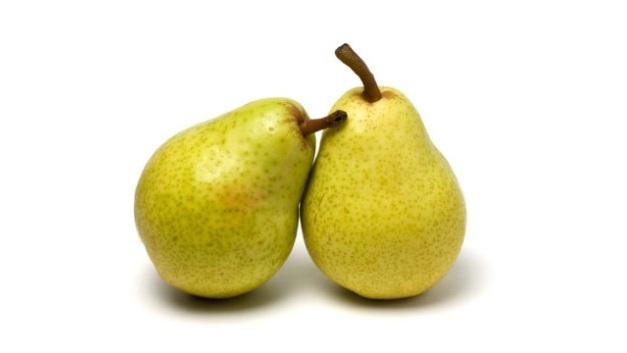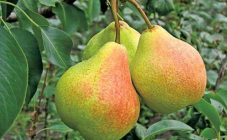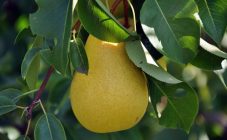Mankind got acquainted with the pear more than 2000 years ago. This tree, a close relative of the apple tree (as well as the rose and mountain ash), produces delicious fruits that are loved by both adults and children. In addition, pear wood is highly valued as a material by cabinetmakers and musical instrument makers. The wood is both beautiful to look at and soft to handle, and at the same time holds its shape well enough.
One of the favorite varieties of gourmets is the Pakham pear (Williams Pakhams). Her homeland is Australia, but now she is getting divorced in Argentina, Chile, South Africa. It differs from other varieties in a specific delicate sweet and sour taste.
Origin story
The Williams variety appeared in the 18th century, its homeland is England. It got its name in honor of the popularizer of this variety - Richard Williams. And the author of the Williams Pakhams pear variety (popularly known as the Argentina pear) since 1890 is the breeder Charles Pakham from Australia, from where, in particular, it is brought. It bears fruit in summer, autumn, winter and early spring - from January to September.
It differs from the other subspecies of its variety not only in taste characteristics, but also in the place where it grows: Pakham pear is found in Argentine, Australian, South African and Chilean orchards. In Russia and the CIS countries, it does not grow, although attempts are being made to grow wild wild or ordinary mountain ash on a rootstock. However, most likely to meet her in the store.
Description of the variety
The fruits have a sweet and sour taste. Their "calling card" is small hard blotches, thanks to which Pakham pear crunches appetizingly on the teeth, while the pulp is rather soft. Another interesting characteristic is that in order for the fruits to become even tastier, they must lie down a little at room temperature. This only enhances the taste: the pear becomes sweeter and softer and crunches even more like chips. Only, unlike this delicacy, fruits are not only tasty, but also useful for the body.
Pakham pears are large, grow up to 170-200 g. Fruits are greenish-yellow, and the pulp is creamy (slightly pale brown with a slight admixture of light red). Of course, the aroma drives them crazy, which makes them especially appetizing.
When choosing pears in a store, it is worth taking hard fruits, which are best kept for 2-3 days at room temperature. Most often, they are coated with a special wax-based composition for safety, therefore, they must be thoroughly washed before eating.
You can store pears for a long time, but at a temperature of 2-0 ° C in a dark room, basement, refrigerator (but not freezer) or unheated room. This variety is late autumn (by Russian standards), so it is not afraid of sufficiently low temperatures. Before leaving the pears for storage, you should inspect them for the presence of foci of rot and mechanical damage. Spoiled fruits will not last long, and good ones will last until the end of November - early December.
The benefits of pear
The fruits of this variety are classified as dietary.Due to the high fructose content and low acid content, they can be resolved even with diseases of the pancreas, in which other fruit varieties are not recommended for food. The benefits of Pakham pear are also high pectin content. It is good for blood circulation and helps the body cleanse itself of toxins, normalize cholesterol levels. Fiber is also useful for cleansing the body, which is found in large quantities in this overseas variety. Pear Pakham will help and gently remove excess water from the body. Also, this pear variety is good for the thyroid gland, for better absorption of iron and blood formation.
In general, this variety is one of the record holders in carbohydrate content, but it does not create problems with the figure. In addition, the pear is a source of vitamins and provitamins such as A, B vitamins, vitamin C and beta-carotene. Another useful property of this fruit is that it contains many useful trace elements such as copper and silicon.
Growing
There have been no attempts to grow the Pakham pear in the climate of Central Russia and the post-Soviet space on an industrial scale. Although there is information about the rootstocks, grafted onto the wild. However, zoning for the northern latitudes of this variety has not yet been carried out. In natural, but rather habitual conditions for her, the Pakham pear grows not only in hot Australia, but also in countries with rather temperate climates. Therefore, the cultivation of this variety is theoretically possible in places where there is no severe frost and sufficient sun, for example, in the Krasnodar Territory, Crimea.
For grafting, you can use quince, on which the pear begins to bear fruit after 3-4 years. However, in the conditions of the subtropics and tropics, the variety also bears fruit quickly enough and yields up to 400 centners per hectare.
So far, anyone who is going to plant a Pakham pear in Russia can follow the general recommendations for all Williams. This group of varieties is not self-pollinating, so other varieties of pears should be planted nearby. Universal pollinators for them are, for example, the well-known varieties Lesnaya Krasavitsa, Olivier de Serre, Lyubimitsa Klappa.
Further care
Caring for this pear variety is also quite simple. The main thing is to make top dressing all year round, except for winter. The pear loves nitrogen fertilizers, so in the spring it is better to apply solid or liquid fertilizers under the root, in the summer - to spray with liquid (potassium and phosphorus), in September add a little more nitrogen, and before winter add potassium and superphosphate to the trunk circle.
You also need to protect trees from scab by treating it 3 times during flowering with Bordeaux liquid (1%). In order to prevent, in order to save the fruits from pests, trees are sprayed with karbofos. After shedding the leaves in the fall, you need to clean the trunk circle: dig it up with ash and mulch. It is recommended to lay spruce branches and agrofibre in order to save the roots from freezing in the first 3 years. You can also whitewash the trunk to keep out pests.
Like many fruit crops, Pakham pears are threatened by moniliosis (fruit rot) and black cancer. Pruning, regular harvesting and the destruction of infected fruits save from the first ailment. In case of cancer infection, treatment will not help, only removing the affected branches. A sterile pruner is suitable for this. You need to cut off by capturing a couple of centimeters of the healthy part. After that, rinse the "wound" with copper sulphate and seal with a mixture of clay and mullein or garden pitch.
Those wishing to grow this "overseas guest" in their garden need to calculate the risks, assess the climatic features and calculate the strength, since the first 3 years the pear will require close attention. It will need to be treated from pests and diseases, fed and sheltered for the winter.Well, those who do not want to take risks, but want to taste delicious fruits, should go to the nearest supermarket, where they are sold in large quantities in autumn.














